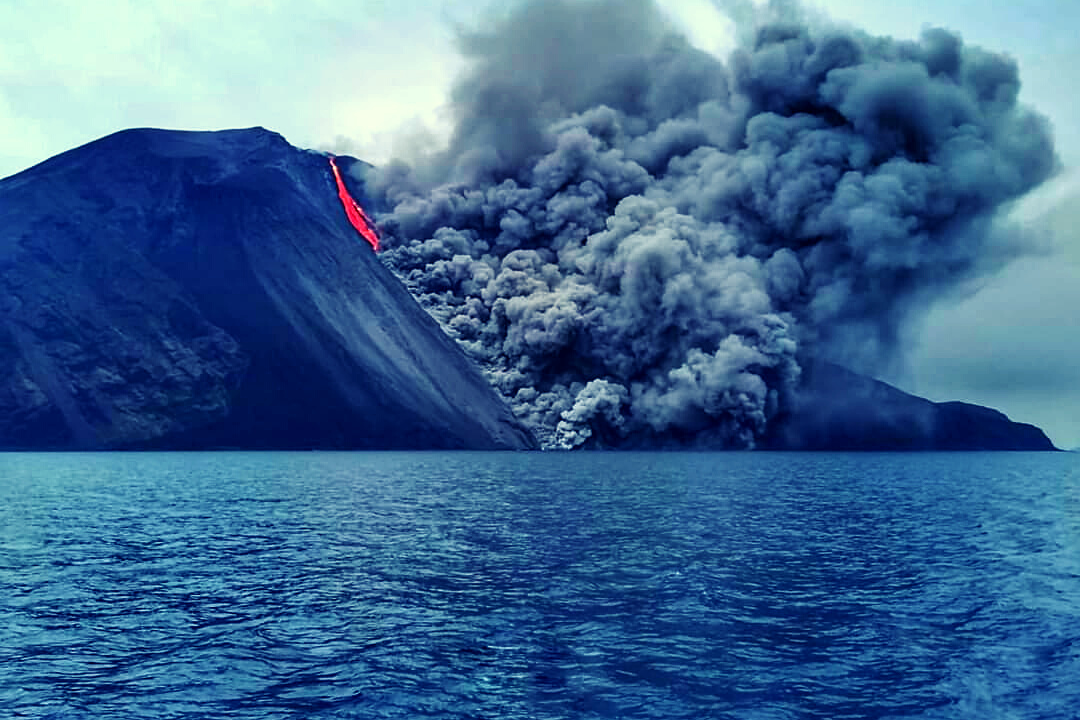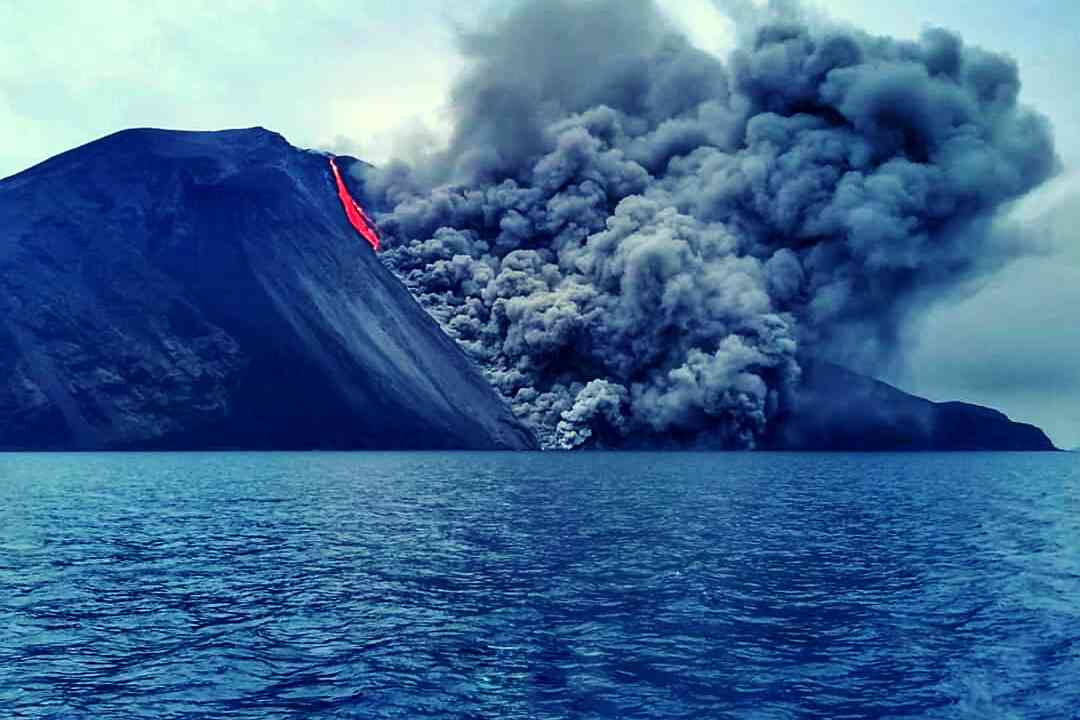On 10th October, plumes of smoke were sent into the sky along with lava oozing and flowing into the Tyrrhenian Sea, as a volcano on the Italian island of Stromboli erupted. There has been no loss of life or damage to property recorded.
The island of Stromboli, the northernmost island of the Aeolian archipelago, is located on the northern tip of Sicily. Stromboli’s volcano, also known as the Lighthouse of the Mediterranean, is a stratovolcano, has steeper sides and is typically cone-shaped than others, and has been erupting almost continuously for the past 90 years. It is one of Italy’s four active volcanoes.
While eruptions are typically short and mild, but energetic, Stromboli’s eruptions are almost exclusively explosive. This pattern is referred to as the Strombolian eruption. The last major eruption of Stromboli was in April of 2009, followed by regular but smaller ones, such as in 2019, as well as a few times this year alone, according to records from the Smithsonian Institution. Many may consider the last truly serious, damage-inducing eruption of the Stromboli as one that occurred in 1921.

During its latest eruption, lava oozed from its right side, causing a partial collapse of the crater terrace, which is what caused the lava to rush towards the sea. Italian civil authorities raised an orange alert as the ‘situation of enhanced volcano imbalance persists.’
The aftermath was captured from space less than five hours after its occurrence by the Copernicus Sentinel - 2 of the European Space Agency. The image of the eruption has reportedly been processed in true colour using the shortwave infrared channel to highlight the newest wave of lava. The Sentinel - 2 is a mission part of the Copernicus series designed to provide high-resolution imagery of land and coastal areas. It consists of two identical satellites, and each carries a revolutionary wide swath high-resolution multispectral imager with 13 spectral bands to observe changes that may occur in Earth’s land and vegetation.
© Vygr Media Private Limited 2022. All Rights Reserved.



















